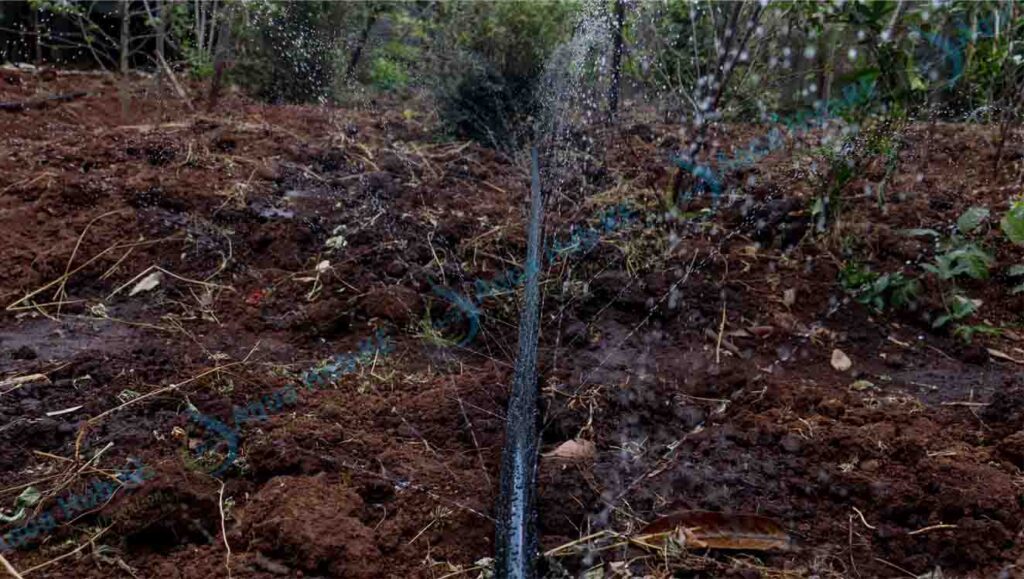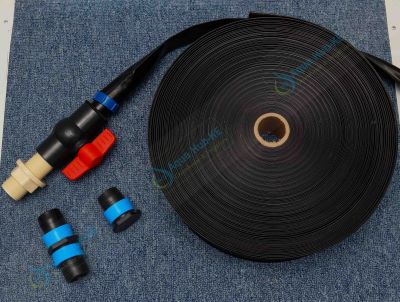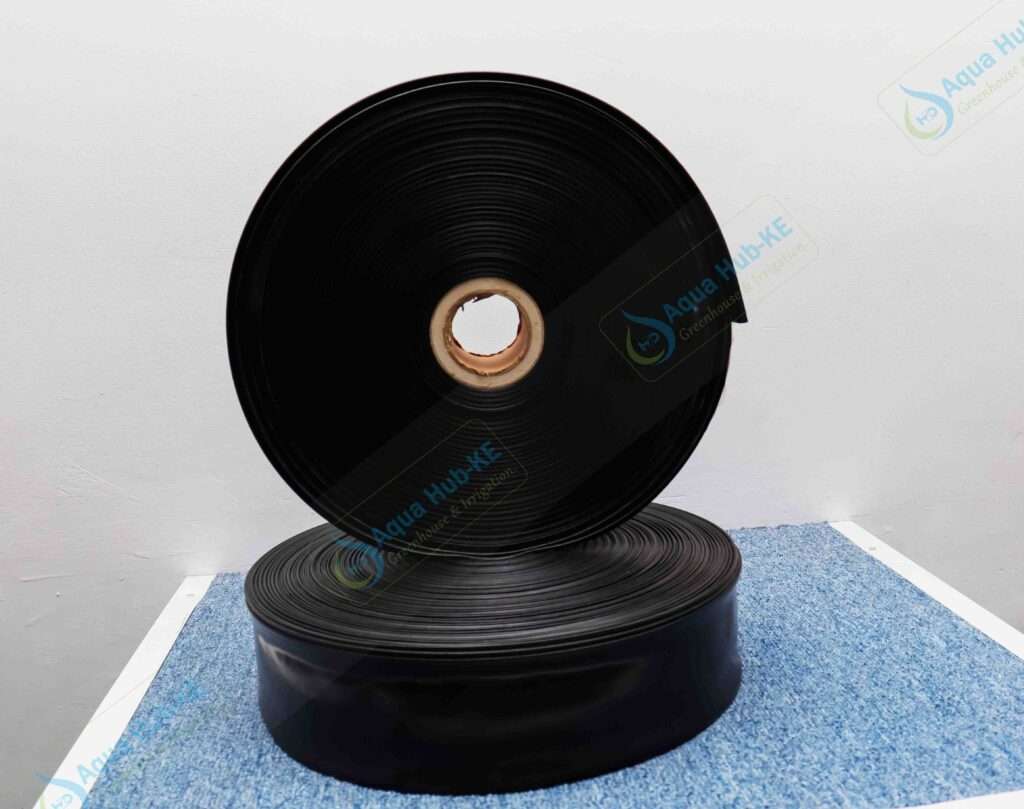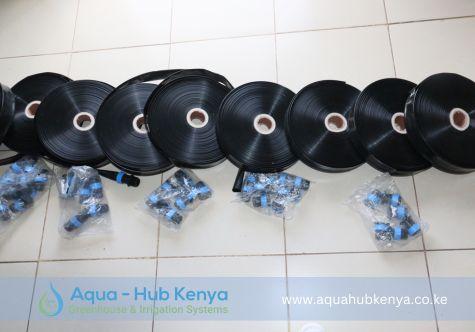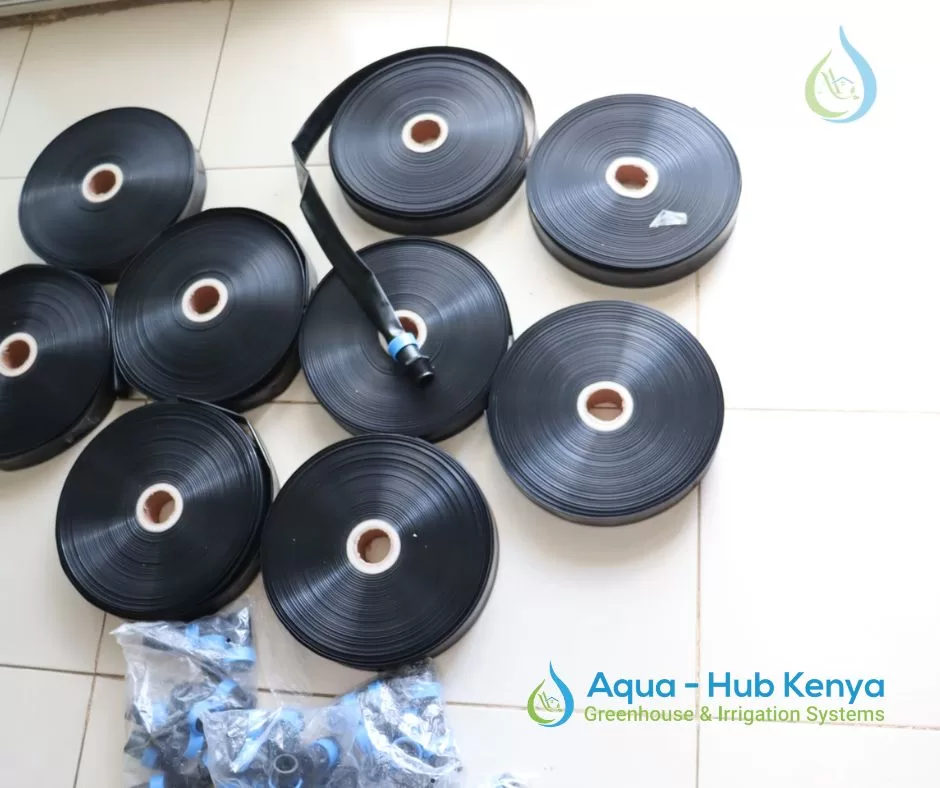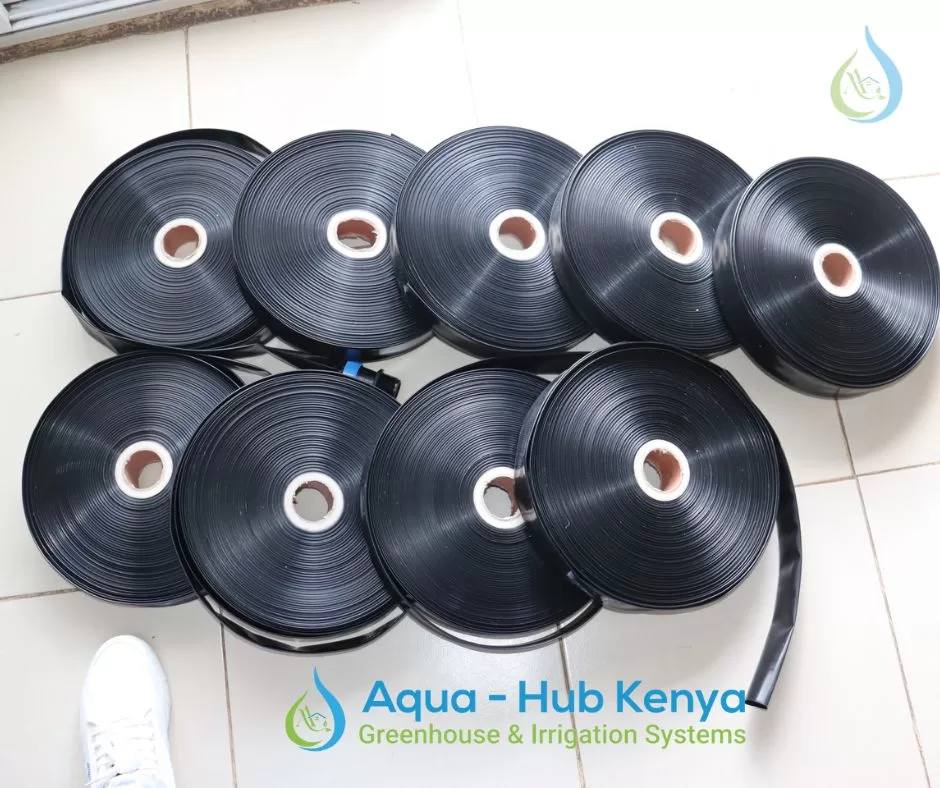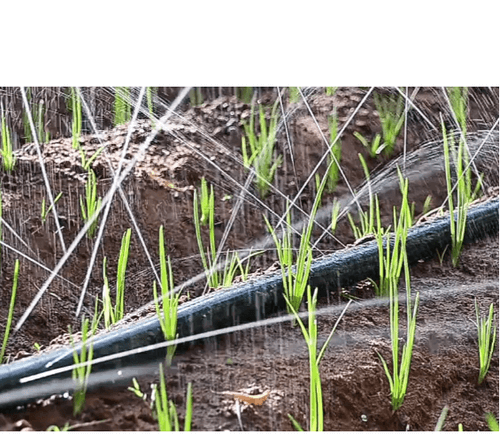Blog
Rain Hose Pipe Price in Kenya | 100m Roll
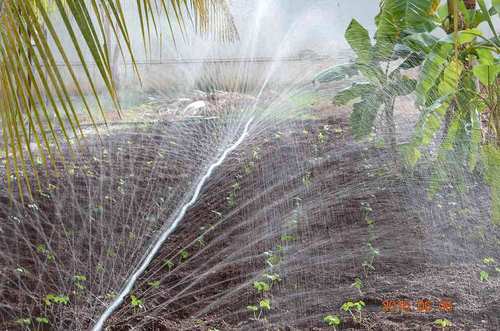
Our rain hose pipe price vary according to the diameter sizes which come in 32mm, 40mm and 50mm. We deliver top quality pipes manufactured from UV treated polyethylene(PE) material.
Rain hose pipes use laser punched holes to deliver smooth water sprays to crops under high pressure.
The laser holes are uniformly spaced on the pipes for even water distribution to crops.
Rain Hose Irrigation Could Be Your Perfect Solution
Compared to other methods of watering crops, the rain hose pipe system is much more affordable. You save more money unlike driplines which may be double the cost of drip irrigation kits.
We deal with quality rain hose pipe and complete system at affordable price in Kenya. Our after sale services include site survey and installation.
Call 0790719020
100m Rain Hose Pipe Price in Kenya
The cost of different available driplines sizes are as listed below.
|
Diameter |
Flow Rate | Spray Coverage (m) |
Price per 100m roll (KES) |
|
32mm (1 inch) |
13 cubic liters/hour | 6 meters |
2,500 |
|
40mm (1¼ inch) |
16 cubic liters/hour | 8 meters |
3,500 |
|
50mm (1½ inch) |
22 cubic liters/hour | 9 meters |
4,500 |
Rain Hose Irrigation Kit Kenya

Rain hose irrigation systems are the complete components required for rain hose pipe to work properly. The rain hose irrigation systems include:
- Rain hose pipe
- Mainline HDPE pipe
- Starter Connecter
- Middle Connecter
- End Caps
- Pump
- Water Filter
- Tank connector
Crops Suitable for Rain Hose
Rain hose irrigation kits are kind of overhead in their mode of watering crops. This means that water gets in contact with crop leaves and thus not suited plants prone to fungal infections. instead they are ideal for:
- Vegetables such as Cabbages, Kales, spinach and onions.
- Fodder crops such as corn, Napier grass and cowpeas.
- sorghum and millet.
- Sweet potatoes.
- Avocado and oranges
- Sugarcane
- Beetroot, arrowroots and carrots.
- coriander (dhania) plant
- Watermelons
- Pyrethrum, roses and carnations.
Rain Hose Pipe vs Dripline
|
Rain Hose |
Dripline (drip Irrigation) |
|
It costs around 65,000 to install on an acre |
It costs around KES 140,000 to install on an acre |
|
Moderate water use |
Highly efficient water use |
|
Less space and small laser punched holes |
Slightly bigger emitter holes with spacing of 15cm to 30 cm. |
|
Wall thickness of 0.4 mm to withstand high pressure |
Wall thickness of 0.3mm. Low pressure watering does not need a thicker gauge. |
|
The pipe comes in different diameter sizes of 32mm, 40 mm and 50 mm. |
Comes in 16 mm diameter size. |
|
Roll length is 100 m |
The roll length is 1000 m. |
How to Install Rain Hose Pipe
Installation of rain hose systems is simple, just requires laying the rain pipe and connection to the mainline HDPE. The steps to follow are:
- Laying Mainline Pipe – place your mainline pipe on the farm from the water source which could be a water pan, tank or river. Ideal pipe size to use depends on the size of the farm.
- Install a Starter connector on the mainline pipe – make holes on the mainline pipe and connect a rainhose start connector. You can also use a saddle clamp.
- Connect the rain hose pipe to the starter connector pipe. Lay the rain hose pipe 25 – 40m to ensure minimal pressure loss and even irrigation.
- Connect end caps on the mainline and rain hose ends – use HDPE end cap for mainline and rain hose end plugs for the rain pipe.
- Start the pump and open the valve to test the rain hose system.
How the System Works
The working principle of rain hose pipes is simple.
- Water Source – The pipe is connected to a tank, borehole, river, or any reliable water supply.
- Pump or Gravity – Water flows into the pipe either by gravity (if the tank is raised) or with the help of a pump.
- Spray Effect – The tiny holes in the pipe spray water in a fine shower, covering crops evenly.
- Irrigation Coverage – Depending on the pipe size, water can spread between 6 to 9 meters on each side.
Rain Hose irrigation is similar to natural rainfall and gives uniform amount of moisture to every crop and has low flooding which wastes a lot of water.
Pumps Ideal for Rain Hose System
The best pump to use for the rain hose irrigation system depends on the desired flow rates as per the plants and farm size.
High pressure diesel or petrol pumps are ideal for rain hose irrigation systems.
Benefits of Rain Hose Irrigation System
- Installation of rain hose pipes is very easy and takes a shorter time to complete. The rain hose pipe and complete installation requirements are cheaper compared to sprinklers or drip irrigation.
- Uniform discharge rates of water on the entire farm.
- Rain Hose Pipes have UV treated resin which makes them long lasting.
- Provides sufficient irrigation due to high discharge rates. Because of the high flow rates they effectively distribute water to high water needing crops.
Tips for Efficiency of Rain Hose Irrigation System
- Ensure you have sufficient water access, as the system uses much water.
- Avoid irrigation on windy days, it affects water distribution
- Filters are necessary especially if water is from a river.

